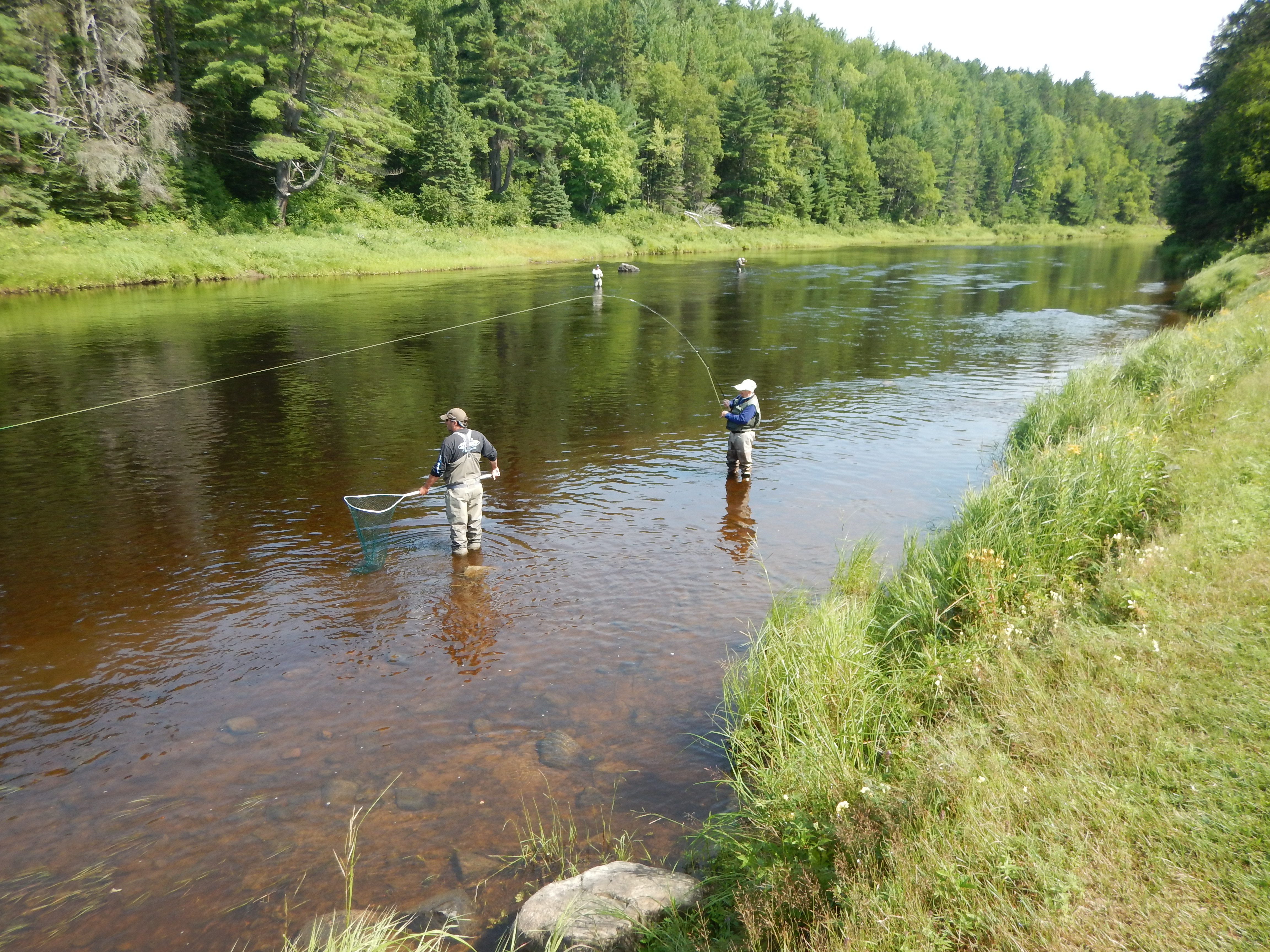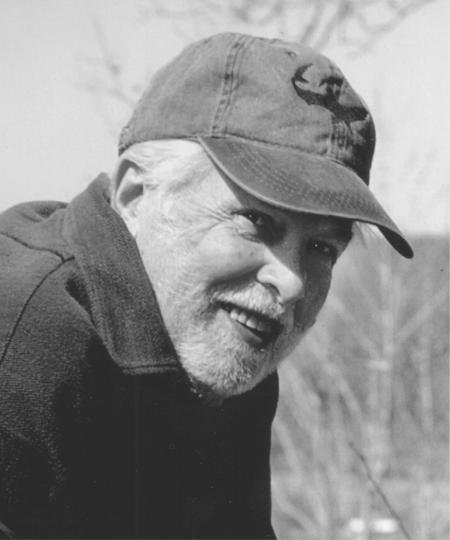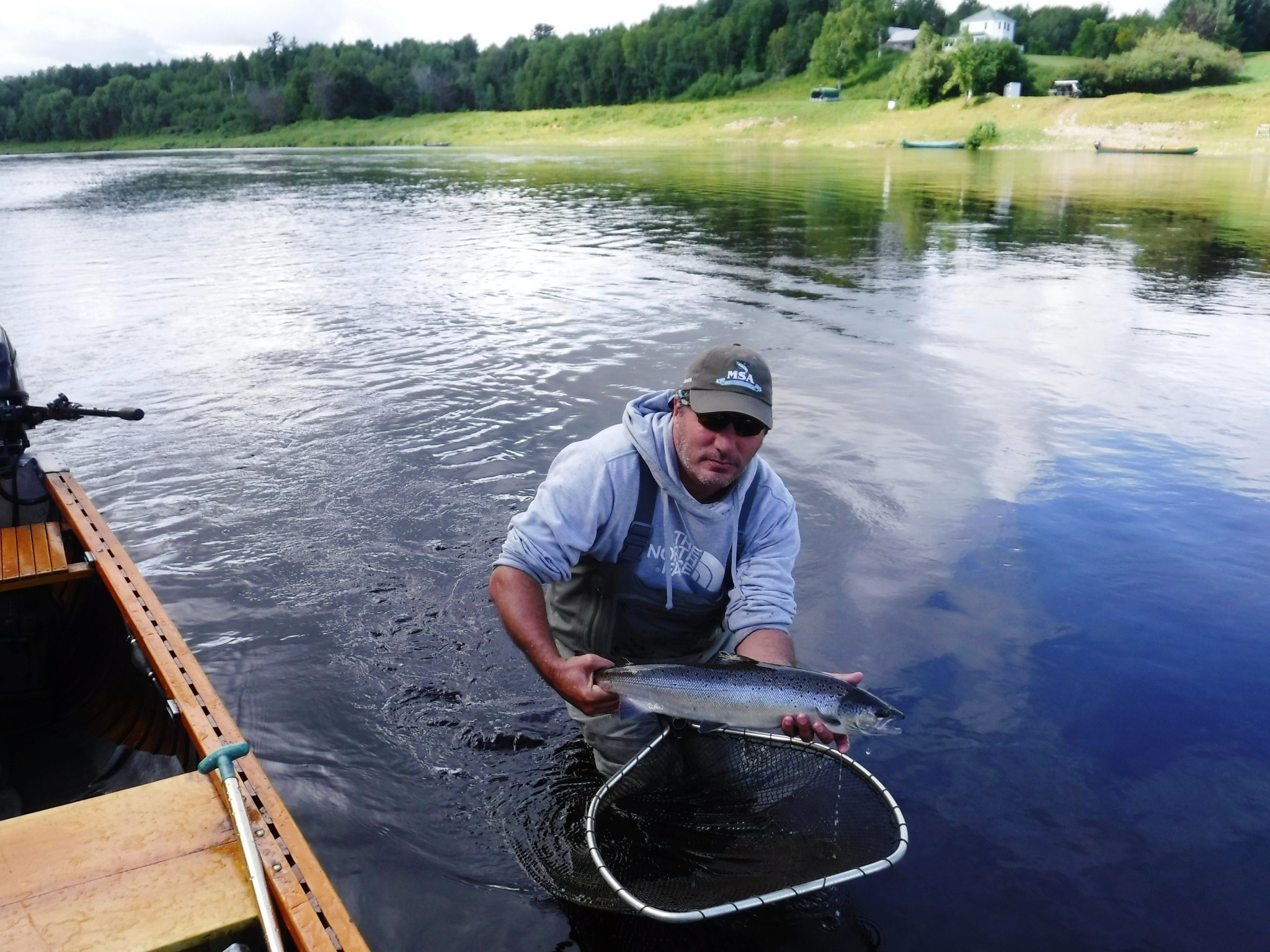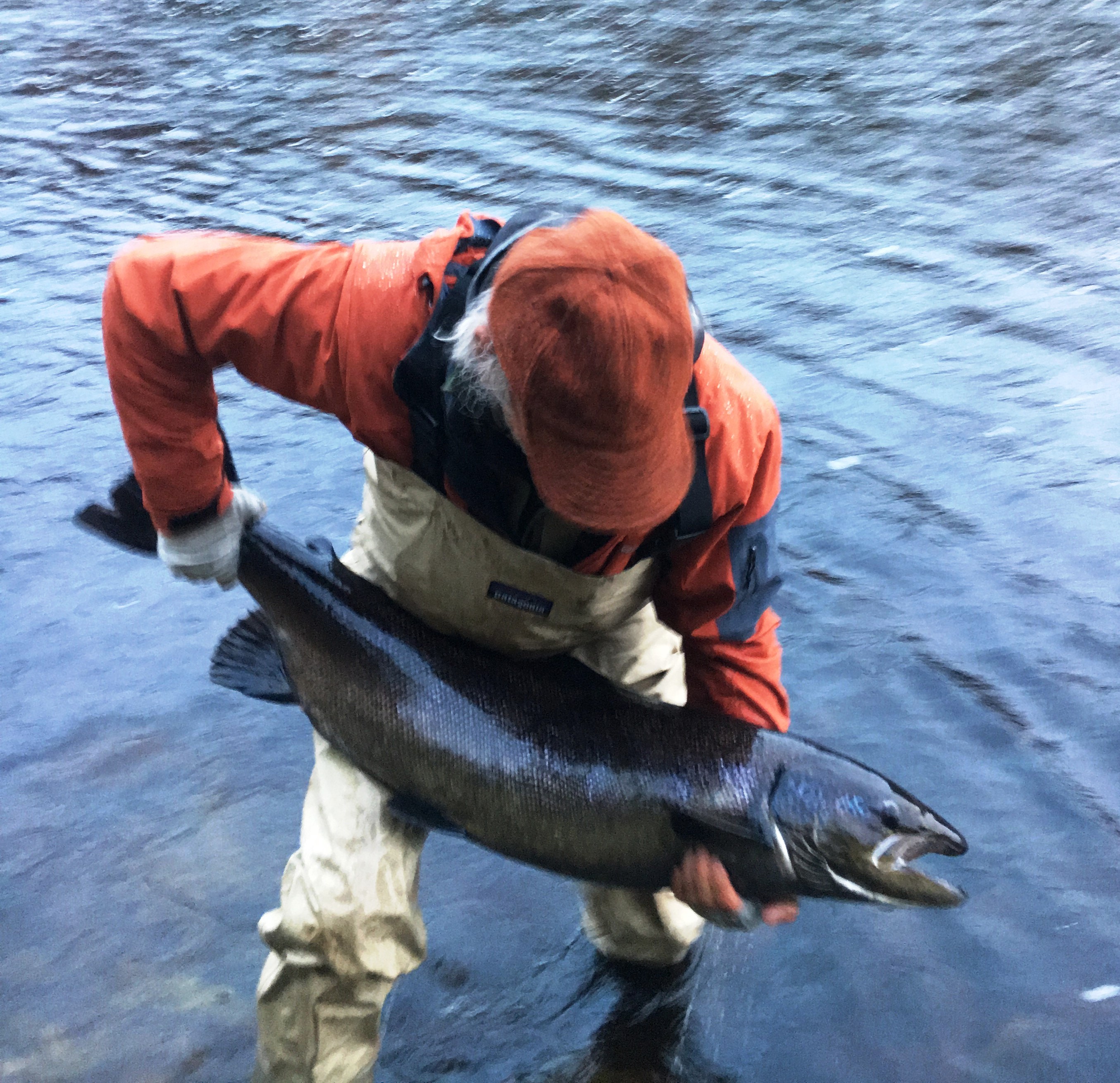
The Miramichi Gets Thrown A Curve Ball By Mother Nature
Fishing Friends –
I’m constantly reminded of the incredible importance that Miramichi salmon fishing has had to fly fishermen from all over the Northeast. Here’s a little story about all that I hope you’ll enjoy.
About this time of year, we are often looking for the cracks in summer’s armor.

8 years ago on August 20 the summer doldrums were broken for angler James Graul by a cool raise of water.
Sometimes things just change by inches, but more often the heat hangs on what seems like interminably, then all of a sudden there is a break. Miramichi anglers living away from the river have been looking for those openings since long before my time.
In 2004 I was working a booth for Stripers Forever at a fly fishing show in College Park Maryland. I looked up from my work to see a friendly looking man grinning from across the aisle at me. My clever opening line was often “Do you do a little striped bass fishing?” Bert VanSciver was the right man to have asked that question to. He spent hours with me including getting us a lunch from the concession, and when he left we certainly knew a lot of each other’s fishing history. Bert owned the Bait Shop in Darian, CT, and was the founder of the northern end of the Mako boat tournaments. Bert regularly towed a 17’ Mako to Massachusetts and ran it out to Cuttyhunk fishing for the giant bass
that hung around Sow and Pigs Reef. The Pigs is one of the most treacherous pieces of water on the East Coast, but the little Mako was a terrific boat, and well-handled it was virtually unsinkable.
At that time I only had a couple of years under my belt at Campbell’s Pool, but I was totally infatuated with the Miramichi and its salmon. Bert wanted to hear all about it. It turns out that he had his own love affair with the river. It’s not just the fishing, he told me, it was the romance of the long rides across northern Maine in the middle of the night, the combination of characters in salmon camp, the cocktails with friends, the terrific home cooking and hospitality of the local New Brunswick folks that made it all so compelling.
Later on, I told that story to Duncan Barnes, another old friend of mine. He had lived his working life in Rowayton, CT, and knew VanSciver well. Duncan said that during salmon season Bert always had a pile of gear and tackle all neatly packed and stacked by the door. When he would get the call from NB, Bert would in turn call a couple of his friends, and with whoever was available take off immediately for the 10-hour drive to the Miramichi salmon camp.
Leaving immediately can often be important in catching windows of good fishing. The moment at hand is a case in point. It has been a relatively dry, hot summer across the Northeast. Checking out the salmon sites on the internet I see that virtually everyone south of the Saint Lawrence has considered the summer fishing a near write-off, and is looking forward to the end of summer and a change in weather. The Miramichi system, especially the lower sections of the SW Miramichi, has been a fickle, mid-summer fishing location for as long as there has been a fly rod fishery there for salmon. The silver lining, though, is that while most rivers have seen the last of their bright fish by mid-August, the Miramichi fall run is at least as important as the summer run. The late Percy Knobbs,
founder of the ASF, said that it was hard to exaggerate the number of salmon in the Miramichi’s fall run fishery. Frustrated salmon, holding in the estuary and Miramichi Bay during the dog days, will respond to the urge and head upriver when we get cooler weather and a raise of water. A few days ago it looked like that might happen now.
Back in mid-week Environment Canada was calling for highs in the low 20Cs all through the upcoming week. The rain forecast was for 30-40mm/1.4-1.6” with locally higher amounts. It ain’t happening now! We only got about half that rain above Doaktown, and temperatures – while not hot – are going to average in the mid 20Cs/high 70F this week. The exception to the rain amounts is on the Cains which received about an inch of rain. This will be a nice break for the fish from the near 30C temps of the last 30 days, but it will not bring in a new run of fish or move the current fish within the system upstream very much. There will be some exceptions, and from Salmon Brook on the Cains, downstream to Black Brook, and some of the cold-water pools down in the Rapids there might be some movement and a few new arrivals. The cold-water pools are all closed, though, and are unlikely to open anytime real soon.
I had been in the basement yesterday overhauling my fishing gear that had come back from Newfoundland a bit disheveled, but it looks like I’ll have more opportunities to do that before I make my next dash to Canada.

Better times on the NWM circa 20 years ago, as a worker passes a large, hen salmon through NWM barrier.
A quick check of the trap numbers on the Miramichi system more or less verifies the situation that we have been observing. As of July 31 the trap count at Millerton for salmon was 139. That is up from just 61 in 2023, but the 2023 number is suspect due to the very high water of last summer that undoubtedly reduced the fish catching efficiency of the trap. 139 is down 65% from 389 during the 2000 to 2010 decade before the unbalanced proliferation of striped bass. There is a lot of talk about how much worse off the NW Miramichi is than the SWM, but the trap numbers seem to show a similar decline to the SW – that’s more than bad enough anyway. The greatest cause for concern is in the grilse numbers. The SWM is down from 671 from the pre-bass explosion decade to just 33, a drop of some 95%. First of all, the grilse numbers are a look into the near-term future since they are 1 sea winter fish compared to 2 and older sea winter fish. Also, salmon (as opposed to grilse) numbers are somewhat propped up by containing all of the repeat spawning fish which have historically made up a fairly large part of the salmon run. Essentially every salmon of 12 pounds or larger in the Miramichi is on a repeat spawning journey. The horrific decline in SWM grilse numbers from the early 2000s is mirrored on the NWM.
The conservation groups are waiting for the results of the April Plamu conference to see what DFO is going to do to recover the salmon. They are required by their mandate to come up with a plan, but they were supposed to have done it years ago. Some other groups are considering legal options because they simply see no sign that DFO will do anything meaningful without external pressure. It is a very nervous time in the Atlantic salmon conservation world.




